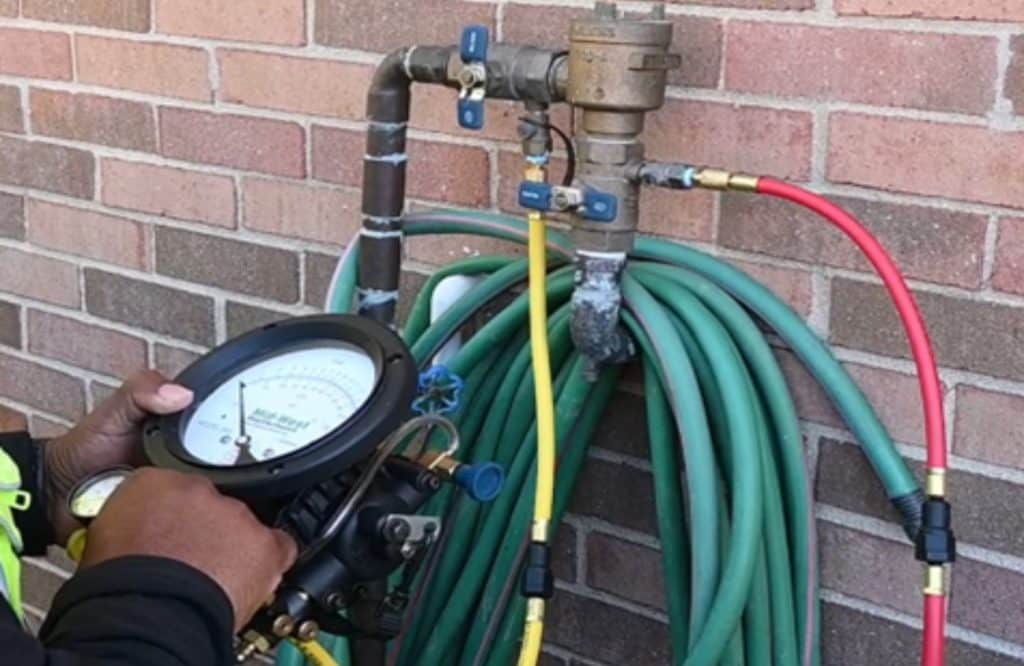Recent changes in several state regulations reveal an alarming shift toward extending backflow preventer testing frequencies, often moving from annual testing to biennial or longer cycles for certain plumbing configurations. While these regulatory adjustments may reduce the administrative burden and cost of testing, they introduce serious risks to public water systems. A reduced testing frequency does not change the fundamental need for consistent, fully operational backflow preventers. Without proper oversight, untested or failing backflow assemblies can create direct pathways for contaminants to enter drinking water.
Building an Effective Cross-Connection Control Plan
The Risk of Extended Testing Frequencies
Backflow prevention assemblies are mechanical devices that require regular maintenance and performance testing by a certified technician to ensure proper functioning. Internal components such as springs, check valves, and seals degrade over time due to wear, debris accumulation, and fluctuating water conditions. With extended testing cycles, there is a significantly increased window of time in which failures can go unnoticed, allowing hazardous substances to flow into—and potentially contaminate—the public water system.

Historical data from cross-connection control programs shows that even when annual testing is enforced and performed, a portion of backflow preventers fail due to improper maintenance, damage, or tampering. With testing cycles beyond one year, the likelihood of undetected failure only increases. This is particularly concerning in high-risk buildings or connections, such as industrial facilities, healthcare institutions, irrigation systems, and various commercial buildings, where contaminants can include hazardous chemicals, biological waste, or non-potable water from process systems.
The Role of Cross-Connection Surveys
In light of legislative changes, public water systems should compensate for extended test frequencies by strengthening cross-connection control program management, enforcement, and surveying. A proactive approach includes:
- Cross-Connection Surveys: Public water systems should conduct more frequent on-site cross-connection surveys to identify new or unprotected hazards. These surveys verify that all required backflow preventers are installed where required, and no unprotected bypasses exist.
- Hazard Evaluations: Not all backflow preventers protect against the same level of risk. Continuously monitor high-risk facilities and enforce stricter compliance, even if state regulations allow extended backflow assembly test frequencies.
- Enforcement: A strong enforcement mechanism is crucial to ensure backflow preventers are not only properly installed but also properly maintained. Water systems should implement enforcement actions for non-compliance, such as water service shut-offs, fines, or mandatory re-inspections.
- Public and Facility Owner Education: Water customers often see backflow testing as a regulatory burden rather than a critical safety measure. Public water systems must increase education efforts, ensuring property owners and facility managers understand why backflow prevention matters and the consequences of unprotected cross-connections.
- Data-Driven Compliance: Water systems should leverage data from past backflow testing reports and survey findings to identify trends in survey data and compliance documentation at high-risk locations. A centralized database that tracks all surveyed cross-connections and forms of backflow prevention provides valuable insight into system vulnerabilities, compliance, and budget planning.
The Need for a More Proactive Program
When states revise regulations and extend backflow preventer testing cycles, the burden of protecting the public water supply shifts more heavily onto local water system administrators. Waiting for a contamination event before acting is not an option—proactive measures must be taken now. Strengthening cross-connection control surveys, enforcing local ordinances, and educating water customers are essential steps in mitigating the increased risk caused by less frequent testing.
Water systems that do not adjust their approach to backflow prevention will face greater liability and potential for public health crises. The best way to combat the risks associated with extended testing cycles is a strong, well-enforced cross-connection control program that prioritizes prevention over reaction.
Ready to learn more about how HydroCorp can support a comprehensive cross-connection control program in your public water system?


